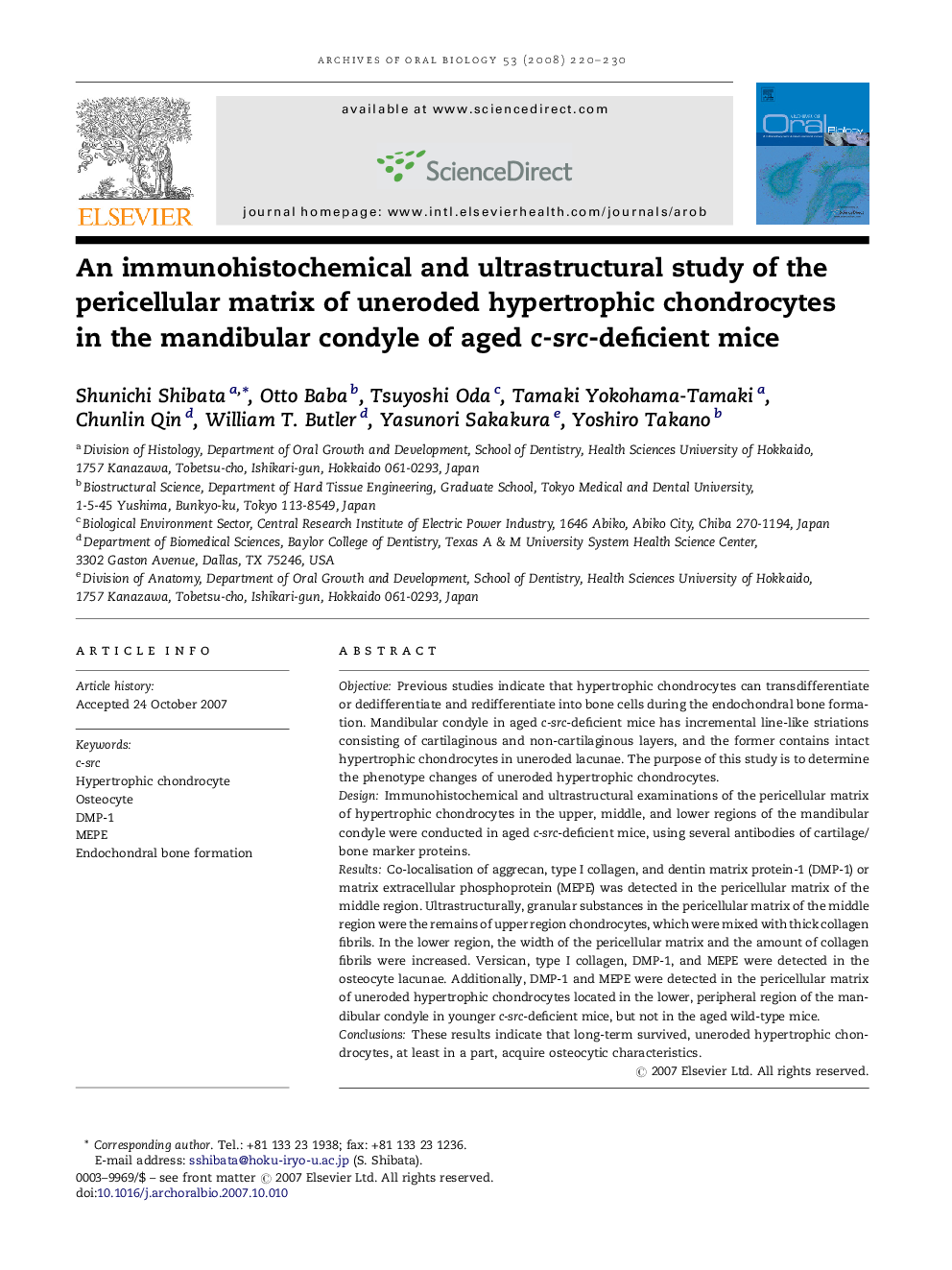| کد مقاله | کد نشریه | سال انتشار | مقاله انگلیسی | نسخه تمام متن |
|---|---|---|---|---|
| 3121367 | 1583387 | 2008 | 11 صفحه PDF | دانلود رایگان |

ObjectivePrevious studies indicate that hypertrophic chondrocytes can transdifferentiate or dedifferentiate and redifferentiate into bone cells during the endochondral bone formation. Mandibular condyle in aged c-src-deficient mice has incremental line-like striations consisting of cartilaginous and non-cartilaginous layers, and the former contains intact hypertrophic chondrocytes in uneroded lacunae. The purpose of this study is to determine the phenotype changes of uneroded hypertrophic chondrocytes.DesignImmunohistochemical and ultrastructural examinations of the pericellular matrix of hypertrophic chondrocytes in the upper, middle, and lower regions of the mandibular condyle were conducted in aged c-src-deficient mice, using several antibodies of cartilage/bone marker proteins.ResultsCo-localisation of aggrecan, type I collagen, and dentin matrix protein-1 (DMP-1) or matrix extracellular phosphoprotein (MEPE) was detected in the pericellular matrix of the middle region. Ultrastructurally, granular substances in the pericellular matrix of the middle region were the remains of upper region chondrocytes, which were mixed with thick collagen fibrils. In the lower region, the width of the pericellular matrix and the amount of collagen fibrils were increased. Versican, type I collagen, DMP-1, and MEPE were detected in the osteocyte lacunae. Additionally, DMP-1 and MEPE were detected in the pericellular matrix of uneroded hypertrophic chondrocytes located in the lower, peripheral region of the mandibular condyle in younger c-src-deficient mice, but not in the aged wild-type mice.ConclusionsThese results indicate that long-term survived, uneroded hypertrophic chondrocytes, at least in a part, acquire osteocytic characteristics.
Journal: Archives of Oral Biology - Volume 53, Issue 3, March 2008, Pages 220–230